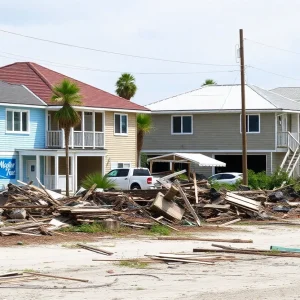Earthquakes Reported in South Carolina: Recent Seismic Activities Documents
Kershaw County, South Carolina witnessed a couple of seismic events over the past weekend, according to information from the United States Geological Survey (USGS). This series of tremors serves as a stark reminder of the unpredictable forces of nature acting under the surface of the earth.
Details of the Events
The first earthquake was reported near the area of Elgin, South Carolina on Saturday. The USGS recorded a magnitude of 2.1 and a depth of 3 kilometers. The quake’s epicenter was approximately 4.2 miles southeast of Elgin and occurred at 1:46 p.m. In relation to Columbia, the earthquake took place 20.3 miles northeast of the state’s capital.
Following the initial quake, a second earthquake was detected by the USGS around 5:01 p.m. on the same day. Sharing a similar depth of 3 kilometers, this quake was slightly more potent than the first, with a registered magnitude of 2.7.
Nature of Earthquakes
Earthquakes of this magnitude are generally classified as minor on the Richter scale. They are often not felt, but if they are, the sensation is very akin to the passing of a heavy truck. Detection usually requires seismographs or other seismic detection equipment. It is worth noting that while these earthquakes in South Carolina were minor, they do contribute to a broader understanding of seismic activity in the area.
The Importance of Public Safety
It is crucial for the public to be prepared for any natural disaster, including earthquakes. Scope for damage and injury can be significantly reduced if people are aware of the proper safety protocols to follow before, during, and after an earthquake. At present, there have been no reports of property damage or personal injury resulting from the earthquakes in South Carolina.
Looking Ahead
The USGS will continue to monitor seismic activities in the area to ascertain if these recent occurrences portend a larger seismic event. This ongoing observation provides critical data for scientists striving to understand the patterns and potential threats posed by such natural events.
In the light of these events, residents are encouraged to familiarize themselves with safety measures and procedures. It is essential to have a plan in place for any potential natural disasters. It is better to be prepared and not need it than to be caught unawares.


























